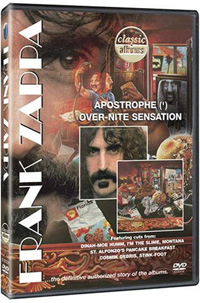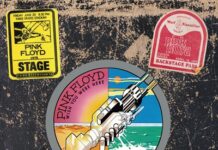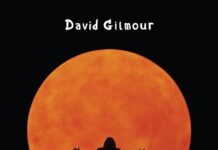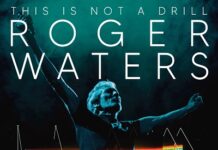The immense vastness of Frank Zappa’s musical output would, if necessary,
require volumes of critical analysis and peanut gallery speculation to completely
comprehend. As it is, two of Zappa’s most popular releases from the early
70s — Over-Nite Sensation and Apostrophe (‘)
— receive the ultimate shakedown via the Classic Albums
series. Interviews with family members, band members, friends and admirers chime
in as the Zappa footage of studio sessions, interviews, and live performances
come out of the closet while eons of tapes unroll along with the events leading
up to 1973-74.
No less than luminaries like Billy Bob Thornton, Warren Cuccurullo, Steve Vai,
Rolling Stone magazine critic David Fricke and Alice Cooper weigh in on Zappa’s
career as a composer, band leader and reticent musical genius. There are also
interviews with Zappa’s wife Gail, and children Moon, Ahmet, and notably
Dweezil, who spins a few multi-tracks and bravely attempts to explain the process
behind his father’s creative fangs. He says that if anyone wants to know
anything about Frank Zappa, they should listen to Over-Nite Sensation
and Apostrophe because they have “rock, jazz,
funk, the attitude and the humor, all at once.”
The DVD jumps back to Zappa’s origins, touching on influences like Edgar
Varese and Johnny “Guitar” Watson. Then, we’re in the 60s
and hearing Freak Out and Hot Rats. Zappa’s
development is duly noted for its honesty, integrity and distinctiveness. Steve
Vai says “Frank’s solos were like sonic sculptures”. Ian Underwood,
Ruth Underwood, George Duke, Ralph Humphrey, and Bruce Fowler, all of whom appeared
on Over-Nite Sensation and Apostrophe, are
a little less stoic in their praise, yet just as reverential when it came to
reminiscing about their time with Zappa. Mostly, they talk about his spark,
his drive to write more and go where no one had gone before.
In between clips of “Camarillo Brillo,” “Zomby Woof,”
“St. Alphonzo’s Pancake Breakfast,” “Don’t’ Eat
The Yellow Snow,” or Zappa soloing away on his guitar, virtual noodling
exercises gleaned from his overactive imagination (Thornton says his guitar
sounded like “razor blades”), his gifts receive a thorough examination.
Even better is that truncated performances from the film, like “Montana”
from the Roxy in 1973 or “I Am The Slime” on SNL, get the full monty
in the bonus video section. And in the end, it becomes achingly clear: the Frank
Zappa mutual admiration society gathered together for this film ultimately misses
the man and his unstoppable quest for chaos and creation. Leave it to Zappa
himself to put a cherry on top: “To me absurdity is the only reality…”
~ Shawn Perry




















